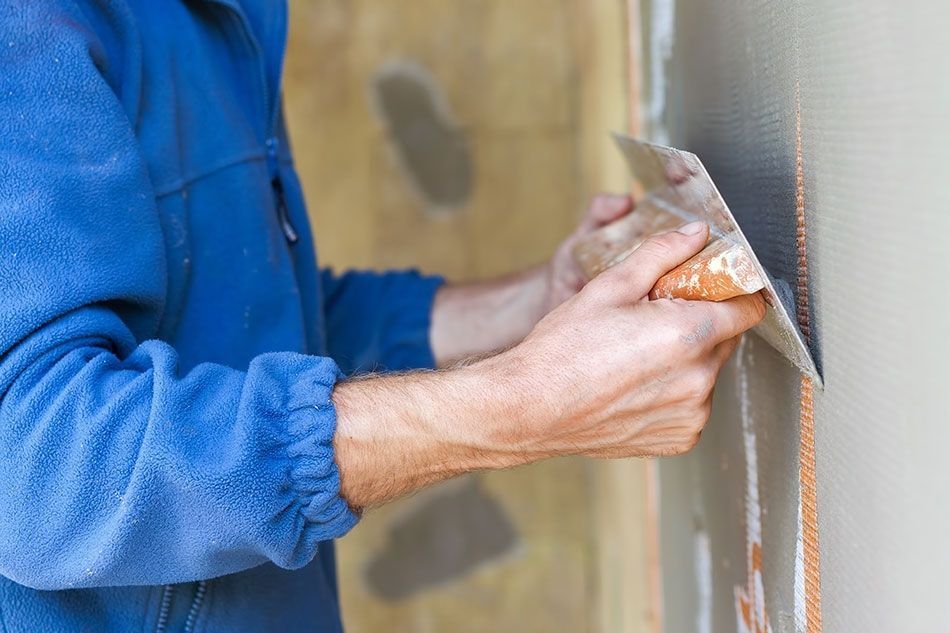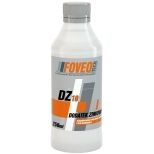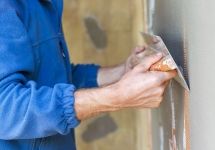Mechanical application techniques of exterior plasters
One of the ways to finish the insulated walls is application of a ready-to-use plaster. Instead of manual application we can take advantage of mechanical means - thus application works can be performed at least twice as fast. What is an application technique then? What is necessary to remember?
We must bear in mind that mechanical application of exterior plasters is a very efficient method and nobody needs to be convinced about it - material losses are minimized and savings are very real. Work efficiency is also better, which is particularly important, if we pay attention to time - the entire house can be finished within a few days.

Mechanical application - what should be keep in mind?
- The plaster is applied by a top-bottom approach, as this way it can be applied evenly and precisely - contrary to what one might think, this job also involves a lot of practice and discipline. It is assumed that an experienced team consisting of 3-4 persons, can apply approximately 100-140 m2 of plaster. It’s twice as much as in case of manual application.
- The ready plaster must be sprayed 25 cm from the wall. The gun must be led steadily and uniformly, perpendicularly to the wall. Immediately after applying on the whole wall surface, it must be treated as a separate section of the facade.
- Depending on the effect we want to obtain, it’s necessary to use an appropriate nozzle. For example in the event of plaster of 1.5 mm thickness - nozzle no. 2 (5.5mm), plaster of 2mm thickness - nozzle no. 3 (6.5mm), plasters of 2.5 mm and 3 mm - nozzle no. 4 (7 mm). Recommended unit pressure approx. 4 bar.
- If we want to avoid differences in shade and texture or significantly reduce their number, work intervals should be planned when application is carried on corners, buildings bents or colours contact points - if we decided to do so (we can choose from a wide range of colours).
- It’s recommended to hire professionals to apply the exterior plaster, who have a suitable equipment. It’s worth asking a friend or seller for some help in finding good professionals, however, we should also see their previous work.
Exterior plasters are applied generally between temperature of 5 and 22ºC, as FOVEO TECH has a winter additive a winter additive  DZ 10 Winter AdditiveSee more to be used at lower temperatures (from 0 to 10ºC, and increased air humidity to 80%). Before we start application works on a particular day - it’s worth checking a module at the website: “Check the weather” It’s important, as it is assumed that drying time is 6-8 hours, and curing time - from 48 to 72 hours.
DZ 10 Winter AdditiveSee more to be used at lower temperatures (from 0 to 10ºC, and increased air humidity to 80%). Before we start application works on a particular day - it’s worth checking a module at the website: “Check the weather” It’s important, as it is assumed that drying time is 6-8 hours, and curing time - from 48 to 72 hours.
